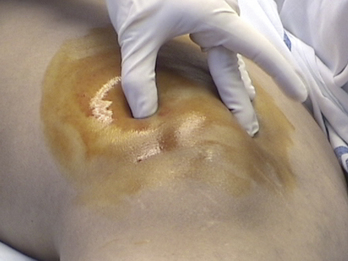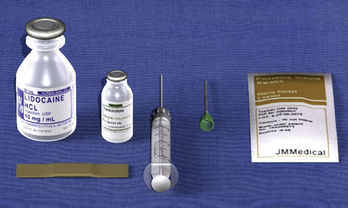Chapter 49 Knee Injection
Common indications
The knee injection of steroids is a treatment for symptoms of osteoarthritis or inflammatory arthritis of the knee joint (Figure 49-1). As with all joint injections, sterility must be maintained for any components used in the injection that enter the knee-joint space. Knee effusions can be found in several conditions, including septic arthritis. Do not inject steroids into a potentially infected knee.
Equipment
The equipment for a knee injection includes gloves, povidone-iodine wipes or alcohol wipes, an, 18-gauge needle and a 27-guage, 1½-in. needle, a 3cc syringe, 0.5% Marcaine, 20 to 40 mg of methylprednisolone acetate or its equivalent, and an adhesive bandage dressing (Figure 49-2).
Key steps
1. Draw up 2 cc of Marcaine and 40 mg of methylprednisolone acetate or its equivalent into a syringe using an 18-gauge needle, and mix well by tipping the syringe backward and forward (Figure 49-3).
Stay updated, free articles. Join our Telegram channel

Full access? Get Clinical Tree




